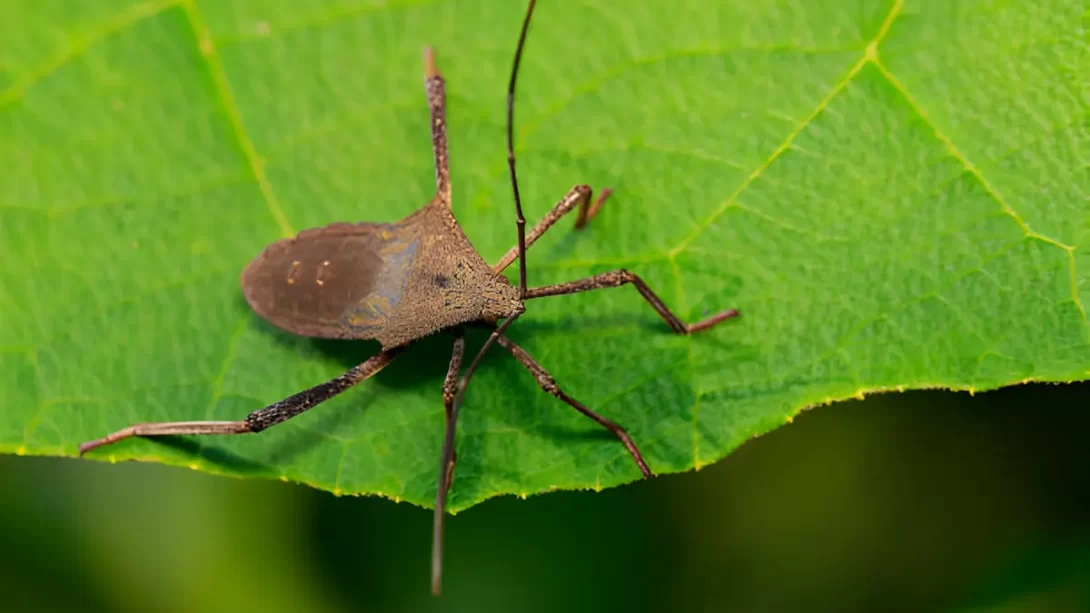Leaf-footed bugs are a common garden nuisance known for their distinctive leaf-like expansions on their legs. These insects, while not the most destructive pests, can significantly impact your garden’s health and yield. Their presence is often marked by damaged fruits, vegetables, and ornamental plants. Understanding how to manage these pests effectively is crucial for maintaining a healthy and thriving garden.
Identifying Leaf-Footed Bugs
Recognizing leaf-footed bugs is the first step in managing them. These pests are typically medium to large in size, ranging from 0.5 to 1 inch in length. They have a narrow body and are usually brown or gray. One of their most distinctive features is the leaf-like flares on their hind legs, which give them their name. You’ll often find them on tomatoes, pomegranates, citrus, and various ornamental plants. Signs of their presence include stippling on leaves, fruit deformation, and excrement spots.
Leaf-Footed Bug Behavior
To effectively control leaf-footed bugs, understanding their lifecycle and behavior is essential. These insects go through several life stages: egg, nymph, and adult. The females lay clusters of eggs, usually on the underside of leaves, which hatch into nymphs. These nymphs go through several molts before becoming adults. Leaf-footed bugs are primarily plant feeders, sucking sap from leaves, fruits, and stems, which can lead to wilting, leaf drop, and blemished fruit. They are especially active during warmer months, although in mild climates, they may be present year-round.
Preventative Measures
Preventing leaf-footed bug infestations begins with maintaining good garden hygiene. Regularly remove any debris, fallen fruits, and weeds, as these can serve as breeding grounds for the pests. Crop rotation can be an effective strategy to disrupt their life cycle. Introducing companion plants, such as marigolds or garlic, can help deter these bugs due to their strong scents. Additionally, physical barriers like row covers can protect young plants during peak infestation periods.
Natural Control Methods
Natural control methods are often preferred for their environmental friendliness and safety. Beneficial insects, such as ladybugs and lacewings, are natural predators of leaf-footed bug eggs and nymphs. Encouraging these beneficial insects can be as simple as planting a diverse garden that provides nectar and pollen. For direct action, organic insecticidal soaps and neem oil can be effective. These should be applied directly to the bugs, preferably in the evening to avoid harming beneficial insects. Manual removal is another option, though it can be labor-intensive. This involves hand-picking the bugs and nymphs or gently shaking them off plants into a bucket of soapy water.
Chemical Control Options
In cases where infestations are severe, chemical control might be necessary. It’s important to choose insecticides that are specifically effective against leaf-footed bugs. Pyrethrin-based insecticides are a common choice, but always read and follow label instructions for safe and effective use. Apply chemicals in the early morning or late evening to minimize the impact on pollinators. Remember, chemical controls should be a last resort after other methods have been tried, as they can also affect beneficial insects and the overall health of the garden ecosystem.
Monitoring and Long-Term Management
Consistent monitoring is key to long-term management of leaf-footed bugs. Regularly inspect your plants for signs of infestation, paying close attention to new growth and the undersides of leaves. Early detection allows for more effective and less invasive control methods. Keeping a garden journal with notes on pest activity can be helpful in predicting and preparing for future infestations.
Implementing a variety of control methods is often the most effective approach. Combining physical barriers, natural predators, and organic treatments can create a robust defense against leaf-footed bugs. Additionally, understanding the local ecosystem and adapting your garden practices accordingly can greatly enhance your control efforts. For example, planting native species that naturally repel pests or attract beneficial insects can be a smart long-term strategy.
Conclusion
Managing leaf-footed bugs in the garden requires a combination of vigilance, prevention, and targeted control measures. By identifying these pests early and understanding their behavior, gardeners can effectively employ a mix of preventative strategies and control methods. Embracing natural and organic solutions not only addresses the immediate problem but also contributes to a healthier, more sustainable garden environment. With these practices in place, gardeners can minimize the impact of leaf-footed bugs and enjoy the fruits of their labor in a thriving garden.



